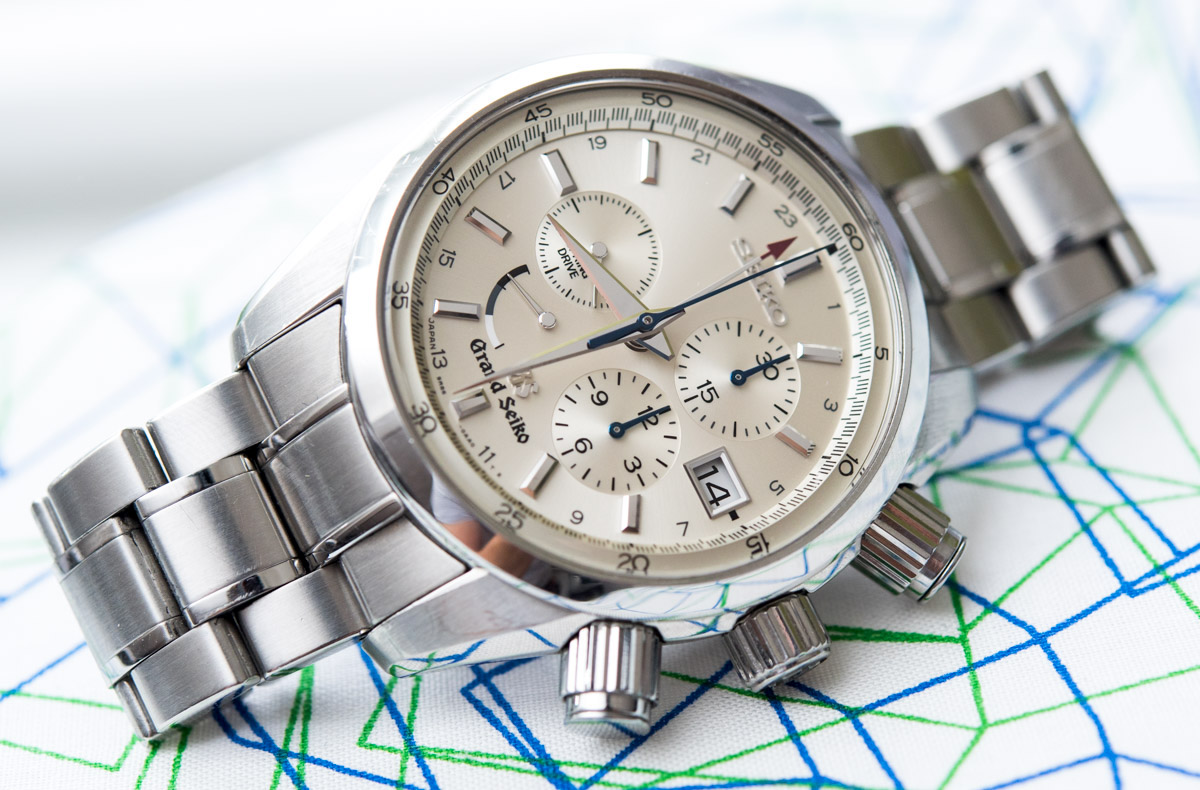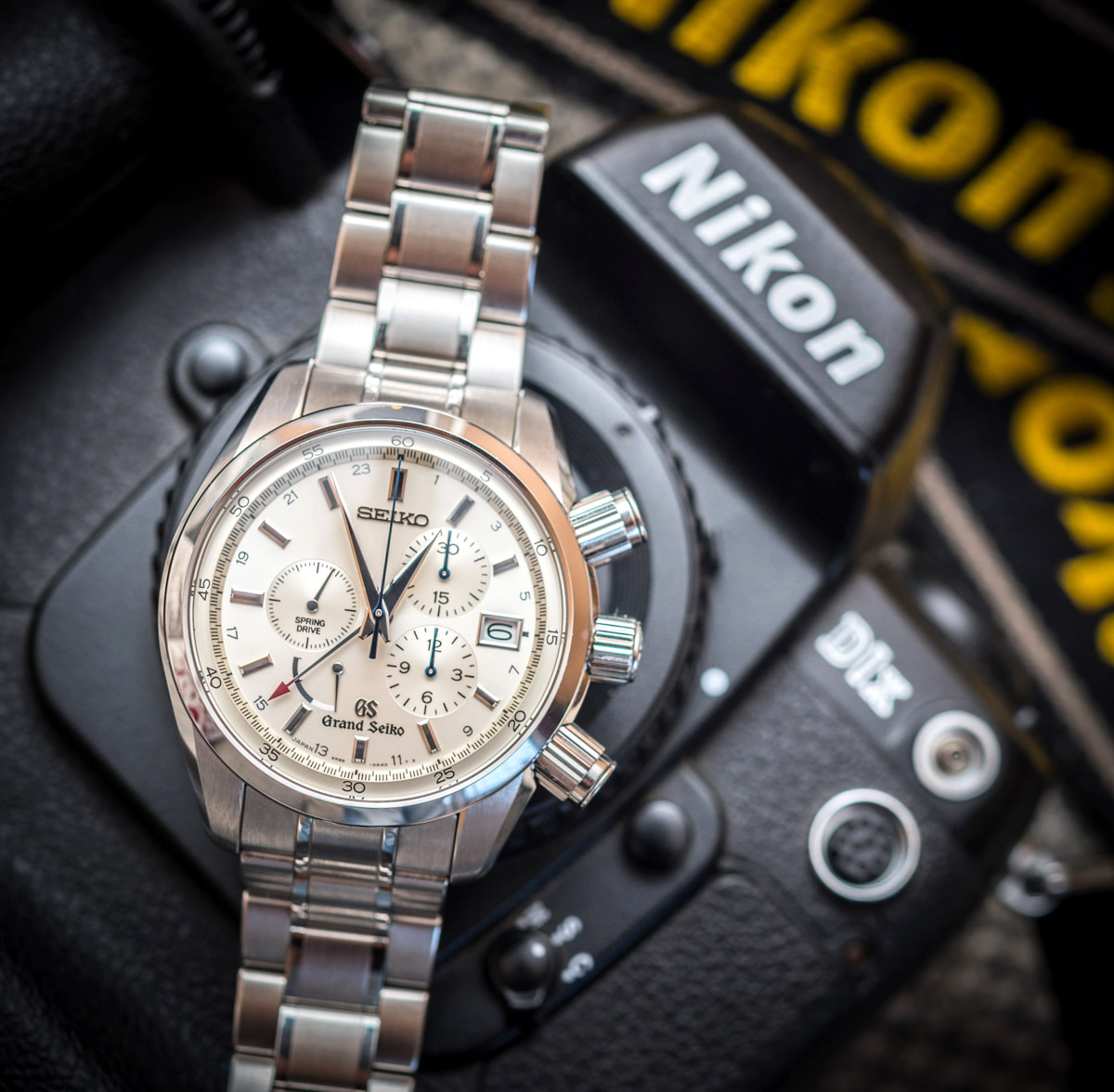
It’s been right around 18 months now that I have owned my Grand Seiko Spring Drive Chronograph SBGC001 – in my mind long enough to make me want to write what I had already planned when I got the watch: a long-term review. I have written an ode of a review to the watch here and I have also written what I believe to be the most exhaustive article online on the history and functioning of the Seiko Spring Drive movement here. Those two together add up to over 7,000 words and because I have worked so much on those two posts, I’ll do all in my power to not repeat too much of what I have said there. Rather, I encourage you to click over, read both and come back to this long-term review, for we will not be covering too many of the basics.
The point of a review is to spend enough time with a watch to figure out its niggles, pros, and cons in everyday wearability and so on. As such, the point of a long-term review like this one is to look back at the findings of the original review and see how lasting the positives and negatives discussed there have proven to be in the (very) long run.
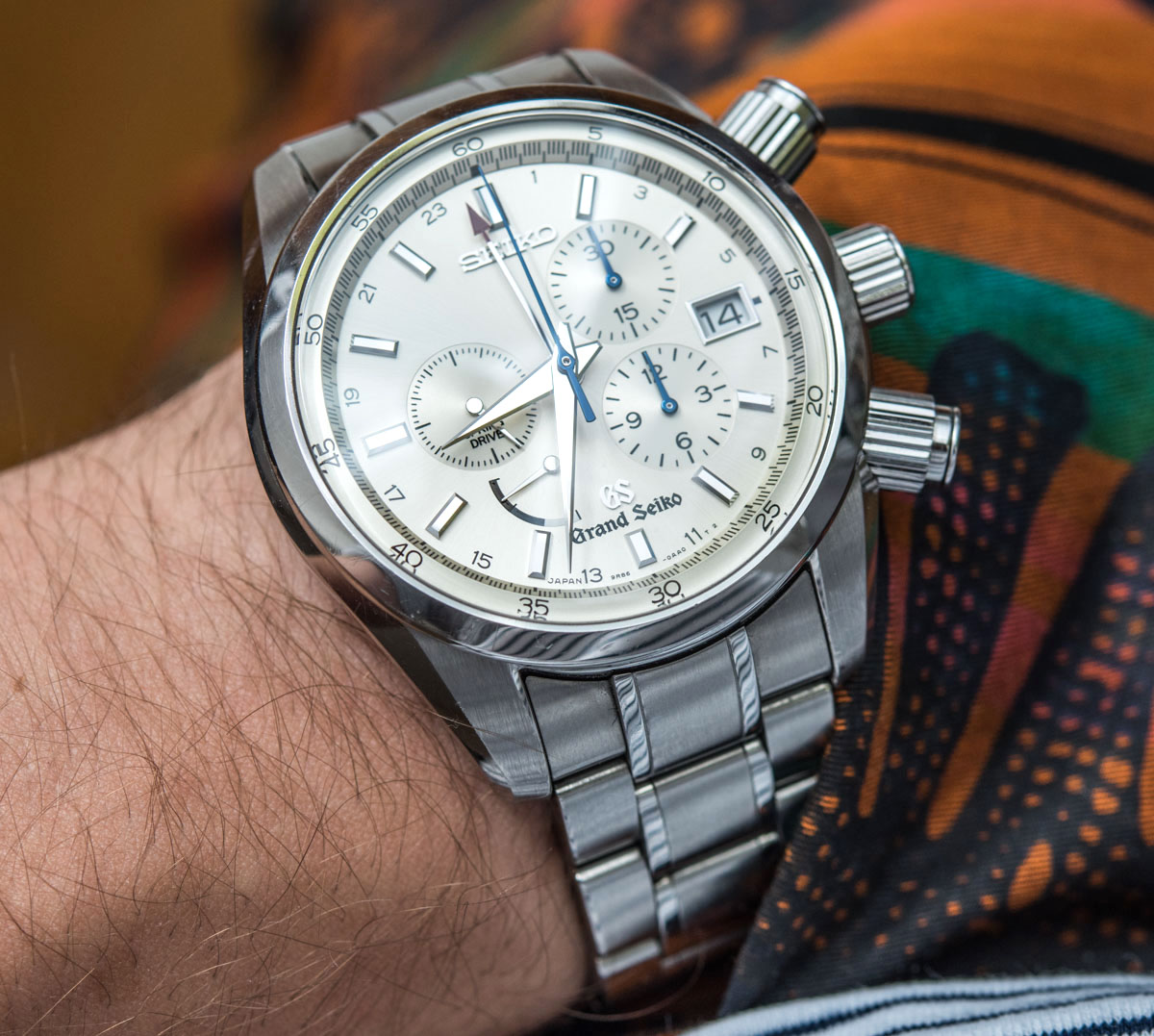
Wearability
Let me begin on a note of a slightly personal nature, something one can only discover with great certainty with the help of a watch fitted with a metal bracelet. Come the summer of 2018 (the second summer that I have had the watch) I realized that my wrist has expanded from its measly 6.75″ to around 7″ in diameter, maybe more – enough to merit going from the 2nd all the way to the last, 4th micro-adjust hole in the side of the clasp. Yeah, I know, I am so ready for my toga virilis now. This goes beyond the regular, daily expansion of the wrist or the effects of summer heat – at this point I’m frequently finding the watch too tight even on this loosest setting and will have to add another half a link to it, where a year ago on the looser settings it wobbled intolerably.
I’m sharing this piece of candid and normally irrelevant information to say that the SBGC001, a substantial watch at 43.5mm wide and 16.1mm thick, now both looks and feels better on my wrist than it ever has (except for those moments when the whole thing is too tight). When people, even hardcore watch lovers, see this watch on the wrist for the first time, some of their most common first questions are about the pushers and some ill-informed remark such as “wow those pushers must be uncomfortable.”
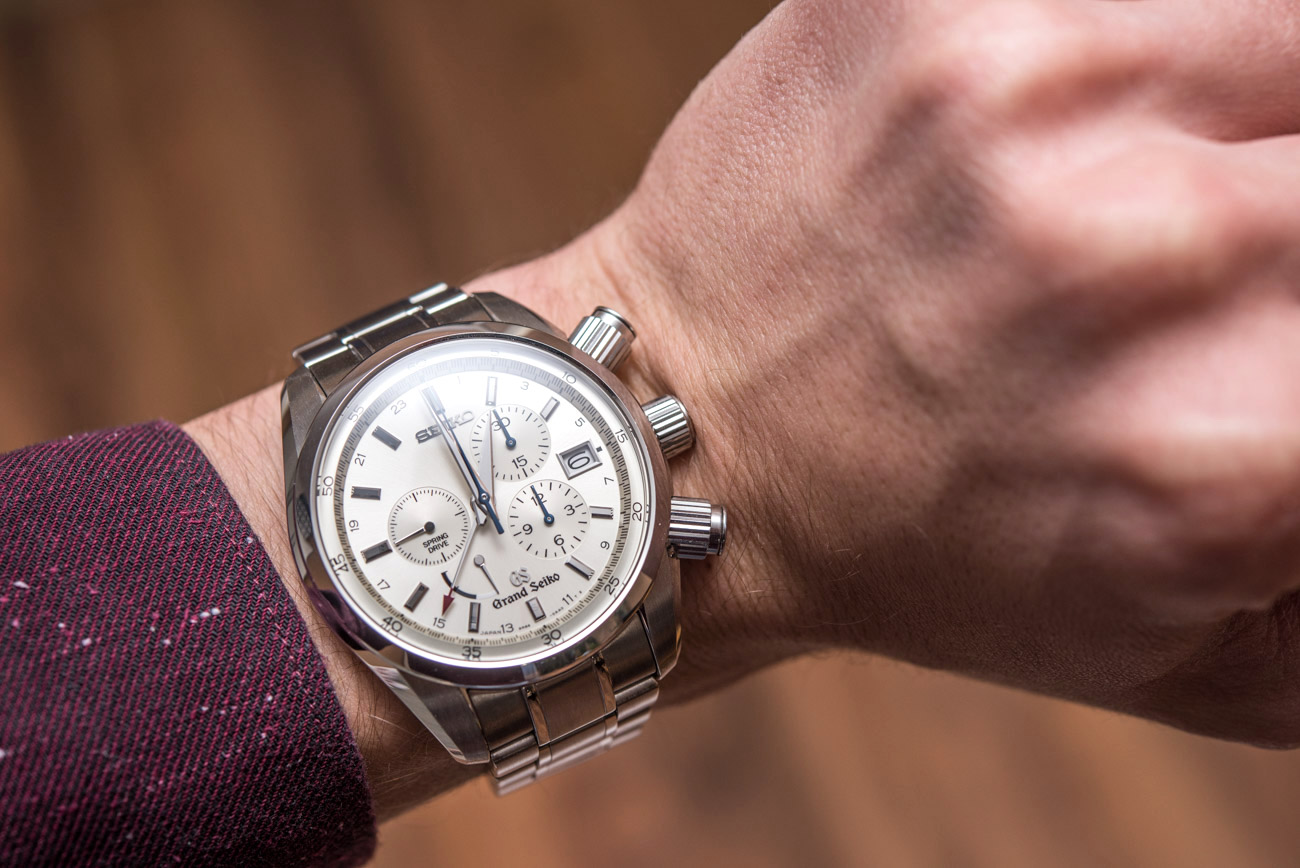
I have dedicated a separate paragraph to this issue in the review and I promised not to repeat myself here – and so I won’t. Long story short, I have not encountered one single occasion over the last 18 months when I found the pushers or the crown to be digging into my wrist. Most Panerais need 18 minutes for that to happen, not 18 months, so it isn’t as though other designs couldn’t create painful wearing experiences. But not this one – again, full explanation with pictures is in the review.
In the long run I found that getting a good fit has become easier as my wrist got slightly wider. The watch head of the SBGC001 is heavy and thick and so it has a tendency to wobble around if the fit isn’t at least 80% perfect. If you like wearing your watches loose, or at least don’t mind if they are, well, this watch likely still won’t work for you as its considerable weight will be frantically pulling and twisting the bracelet, causing the watch to uncomfortably wobble from one edge to the other of the wrist.
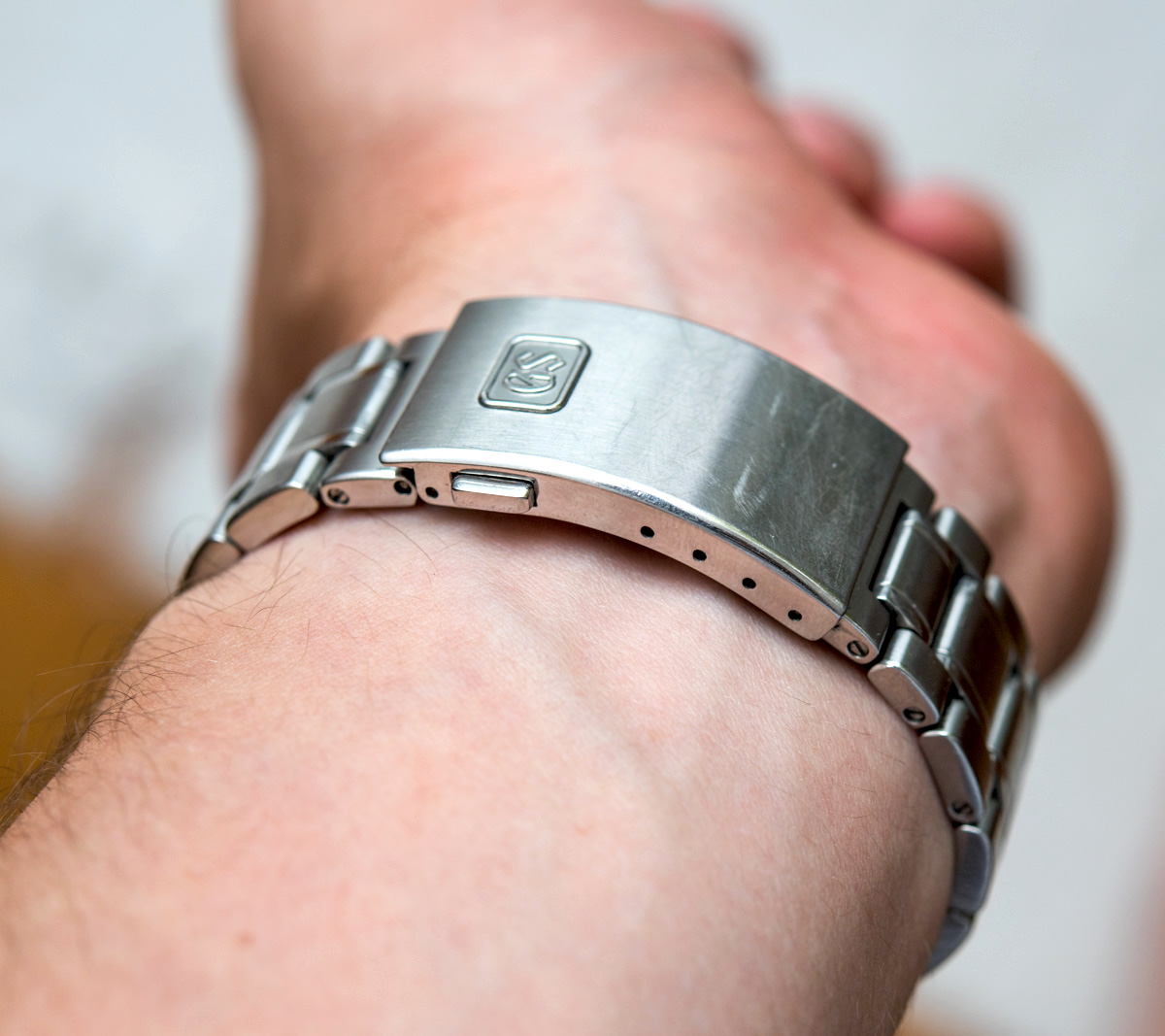
I maintain my original opinion that this watch ideally should have come with a tool-free micro-adjust clasp. I also said and maintain that all luxury watches fitted with metal bracelets should incorporate some type of a tool-free micro-adjust into their clasps. I have seen Citizen and Zodiac figure out extremely clever ways of engineering small, simple and thin micro-adjusts into their clasps and I’d love to see Grand Seiko abandon this retro nonsense drilled clasp for good in all its offerings.
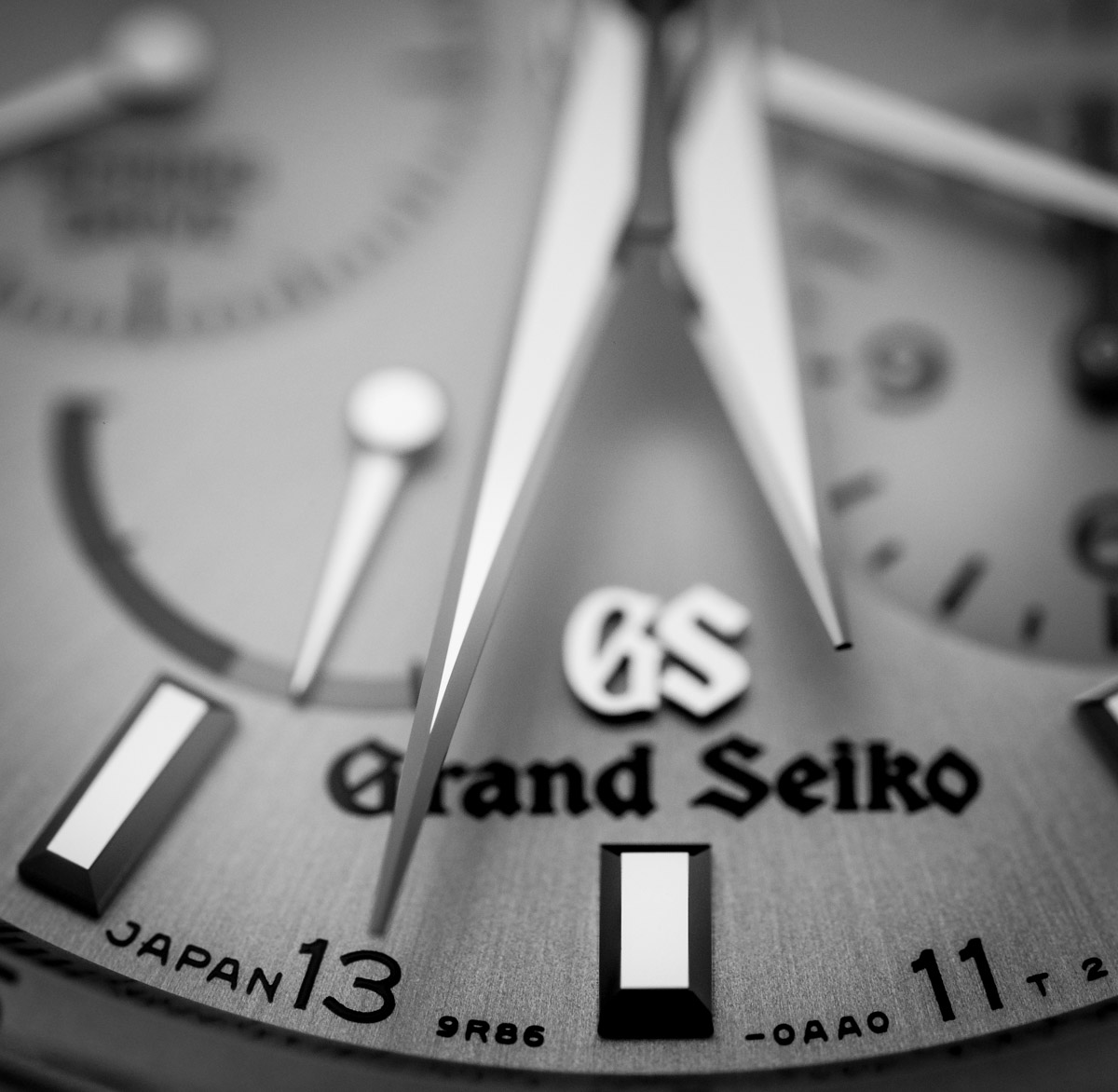
Legibility
The subtle sunburst-finished champagne dial and all its elements I am absolutely in love with to this day. It is refreshingly bright without having the in-your-face sportiness of a white dial. It is classy and elegant and works with most all sorts of attire. The hands and indices continue to very much steal the show though. They are absolutely sublime and superior to 99% of the quality I’ve seen on watches below $25k over the last number of years. Funnily enough, each factor continues to weigh in with the same proportion after all this time: the substantial thickness of the indices and hands (!) that one can appreciate with the naked eye, the superbly done mirror polish on the top surfaces, and the laser-sharp bevels and points are all marvelous, really.
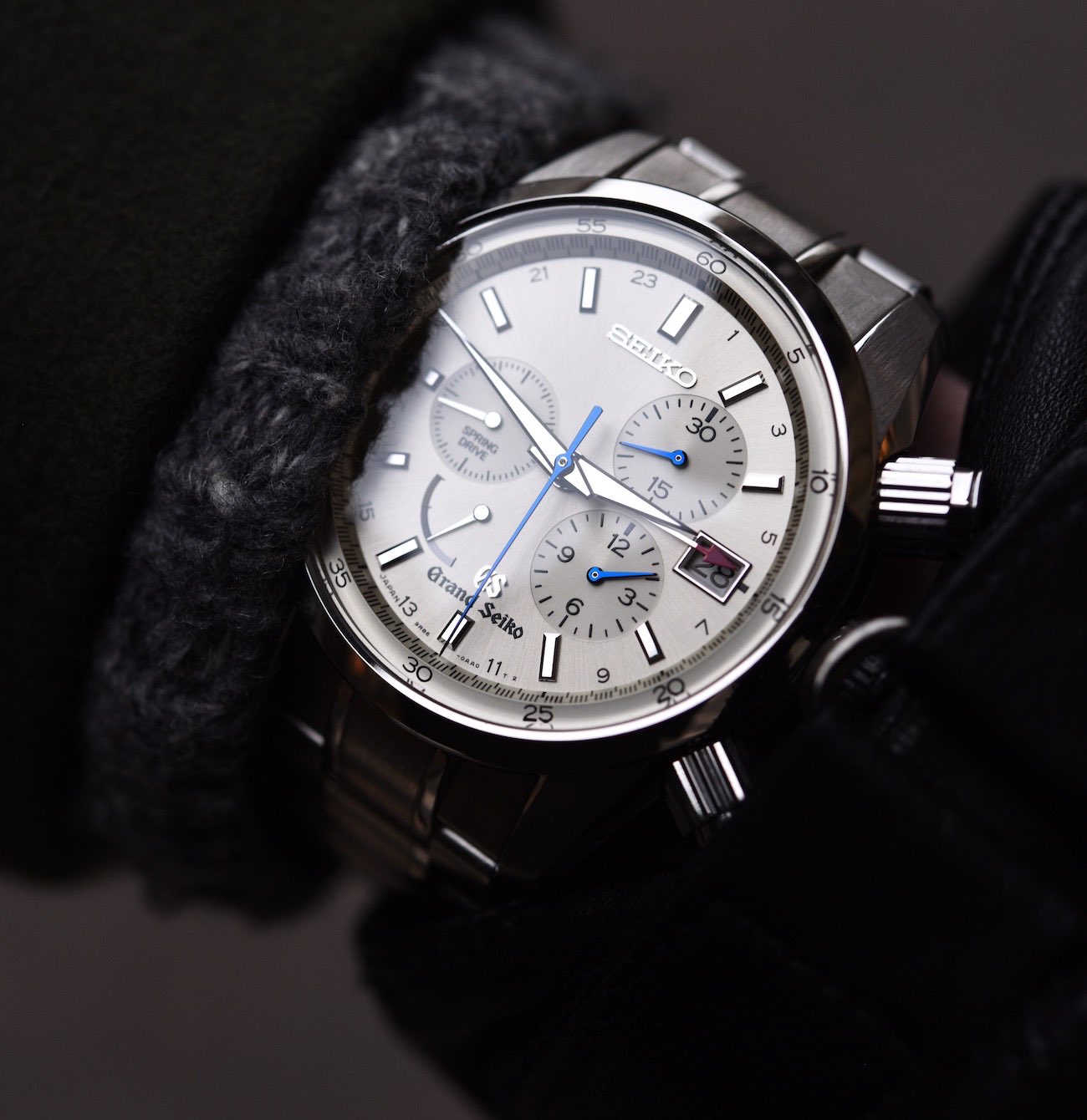
I do not recall any occasion – let alone recurring scenario – when I’ve had issues reading this watch, apart from pitch black darkness. Once there is a little – or a lot – of light, the polished bevels on the main hands make it easy to read the time with great accuracy and at a glance. The tiny sub-dials aren’t better than other chronographs – but aren’t worse either. I still appreciate the color coordinated heat-blued hands for all the indications of the chronograph, neatly separated from the main time indications.
The power reserve indication I rely on frequently, at least twice a week, when I don’t wear the watch for a day or more. It’s just great to know that the watch still has a day or more of power reserve when picking it up when leaving home. The GMT I personally stopped using so often – at this point the -9-hour difference between CET and LA-time is all in my head – but I do set the GMT up as a home-time reference when I travel a few or more timezones away.
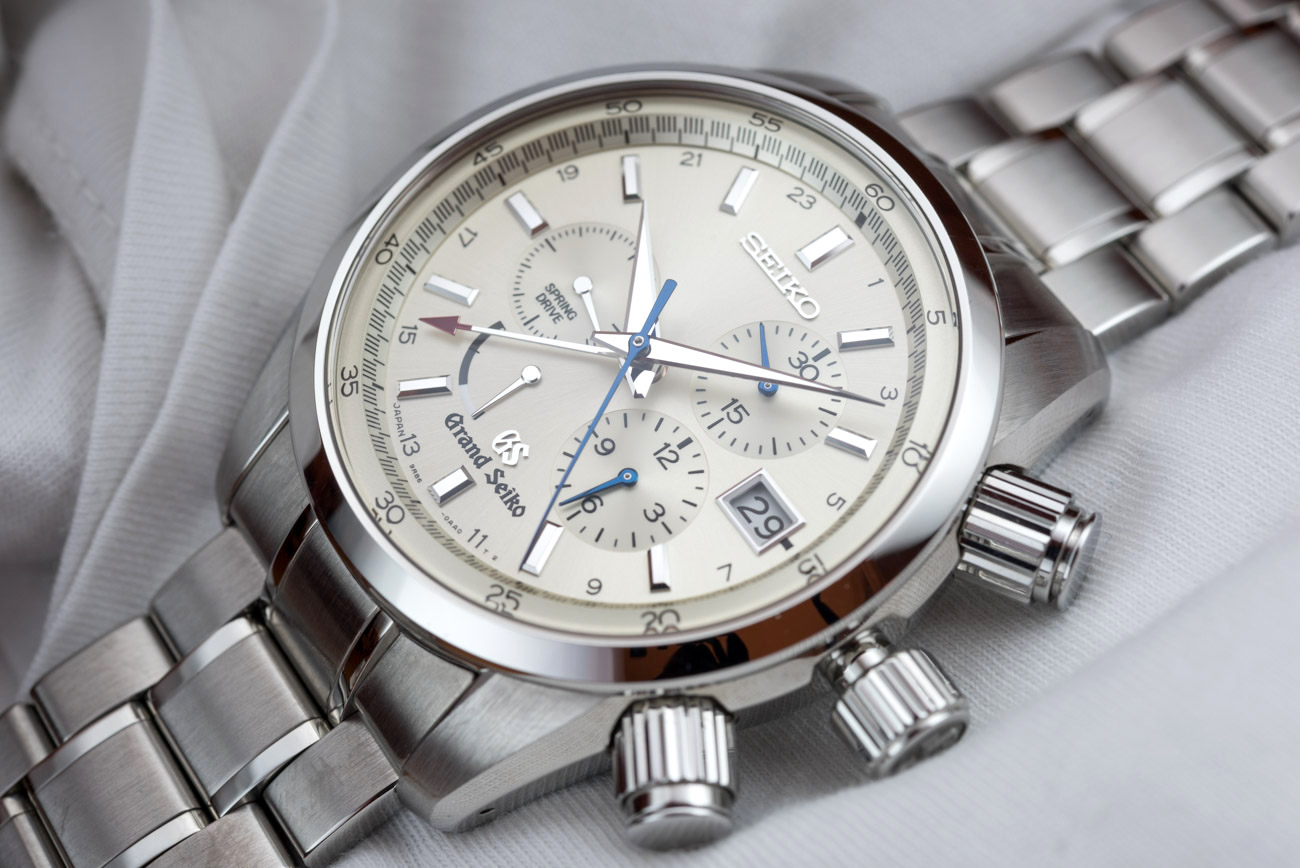
The date did bite me in the arse once when I forgot to adjust for a non-counted 31 (which the watch accounted for anyway since it is a regular date, not an annual or perpetual calendar) and I was supposed to buy a new monthly pass for public transport – and I didn’t. This admittedly was more my fault than the watch’s, as the date is easy to set with the jumping hour setting of the main hour hand – you can do this without stopping the watch or upsetting the minute indication or the synchronized seconds.
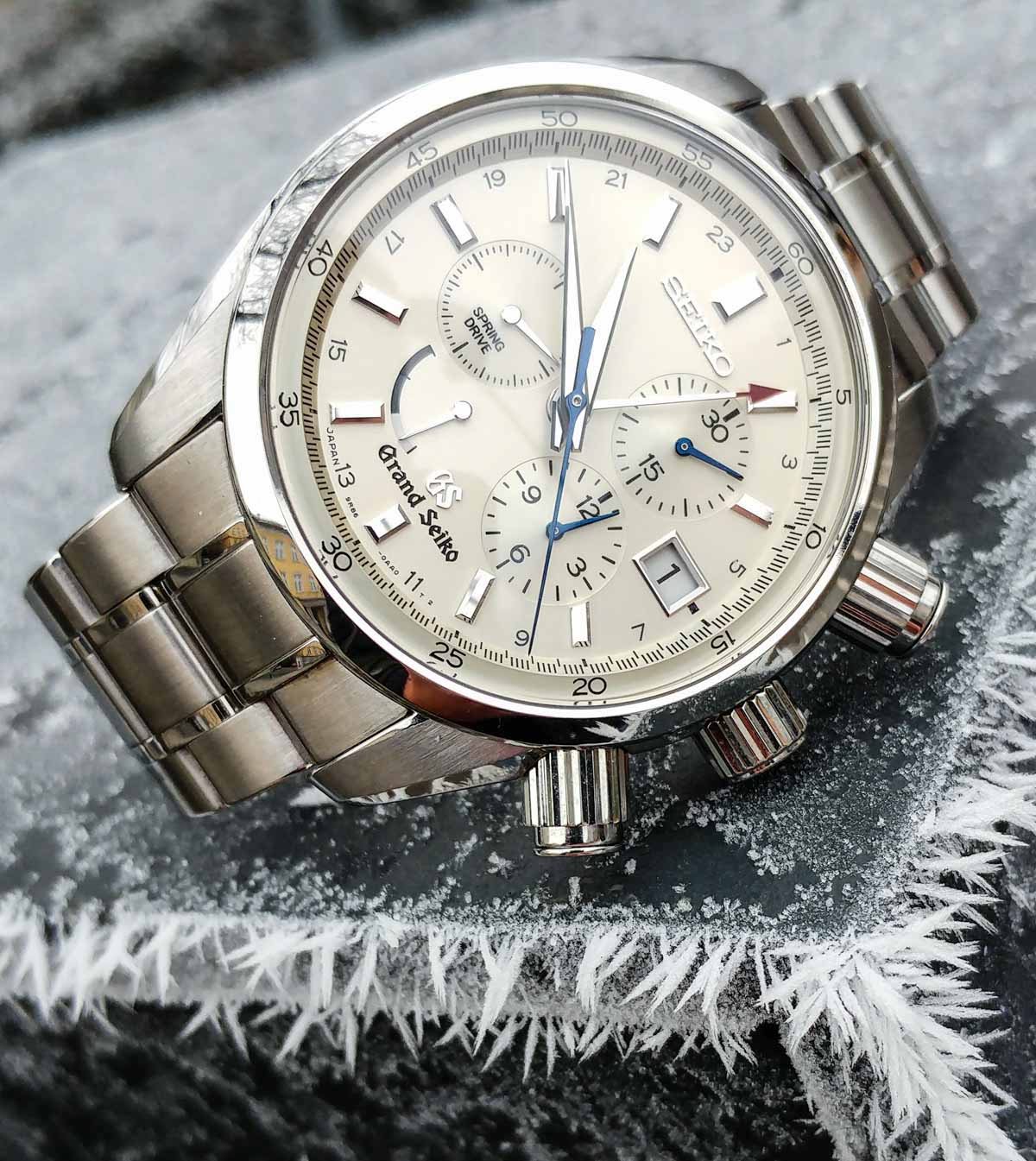
Speaking of which, a most obscure indicator of a movement’s refinement I found to be the following. Given my troubled obsessive-compulsive mind, I like the minute hand to reach a minute marker when the seconds hand reads 60 – not 20, or 45 or whatever. On a side note I have even seen countless video and poster ads by major brands where their watches read 31 seconds or 25 seconds or whatever, but the minute hand was set dead on a minute marker – it bothers me to this day. So, I found that on many movements if you set the minute hand to the minute marker and you press the crown in to start the hacking movement with the seconds over 60, it will actually take 15-25 seconds for the minute hand’s wheels to mesh correctly and so the minute hand actually won’t be driven for a certain number of seconds, therefore upsetting the desired synchronization between seconds and minutes.
With the Grand Seiko Spring Drive Chronograph SBGC001 setting this is remarkably easy, as there is a much tighter link that allows me to set things up properly, start the watch and all will be well. I have found myself looking at the watch on public transport or in a queue or wherever and admiring how the running seconds indication at the 9 o’clock sub-dial passed over the top marker and the minute hand’s super sharp end pointed snap bang in the middle of the marker. Yeah, I guess I should seek help.

Accuracy & Tactile Stuff
Accuracy of the Grand Seiko 9R86 Spring Drive movement is excellent. Seiko calls the 9R86 “by far the world’s most accurate chronograph driven by a mainspring” and like most technical claims the Japanese make, this too is closer to being true, than if the Swiss had said it (sorry, not sorry – though it is true they have improved in recent years with their lofty claims on tourbillons and such). This particular SBGC001 I found to gain a few seconds every couple of weeks. If I synchronize it with a reference time, I have at least 2 solid weeks of catching a minute pass on the sub-seconds within a second to the reference time – truly remarkable stuff. Seiko has also launched what I recall to be the 9R96, which is essentially the same movement but with yet more carefully picked quartz regulators – and if you just raised an eyebrow or two thinking “wait, this has quartz in it?!” then you haven’t read the two articles I linked to above… so go and read them now!
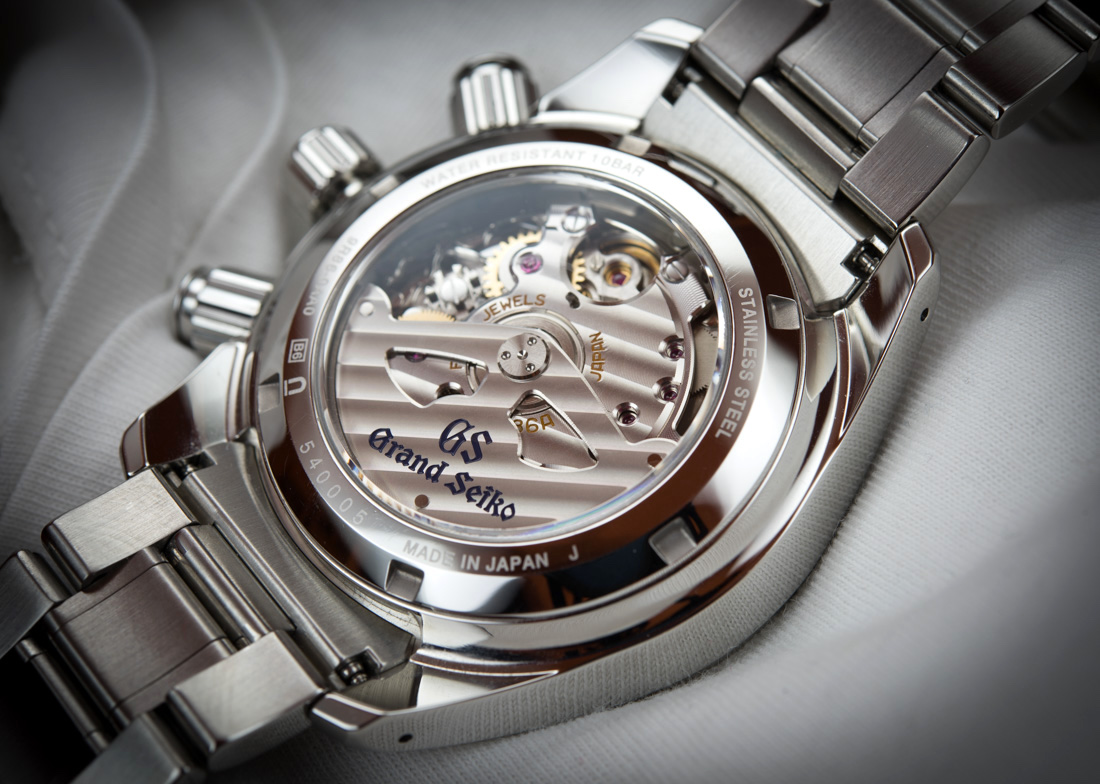
I use the chronograph occasionally, though I truly excel at either neglecting to start it at the right time (like at the very beginning of a road trip, not a few hours into it) or to check it at the end (and not a few hours after arrival), but this is my fault and not the watch’s. The pushers are easy to screw down, they lock and work through the threads smoothly and with a reassuring feel to this day. The massive click when starting the column wheel and vertical clutch equipped chronograph is a joy – and so is the perfectly smooth sweep of the chronograph and sub-seconds hands. Thanks to the vertical clutch there is no nasty jump to the central seconds when the chronograph is started. The 30-minute counter jumps at the end of each minute and the 12-hour counter lends yet greater functionality to the chronograph.

A strange detail I’ve seen on so many Grand Seikos is how the crown is installed in a way so that when it is screwed down and secured the GS logo on it is upside down. I have no idea why that is, but never mind, since over the last 18 months the threads loosened a bit and now the GS logo is upside down plus about 30°. For the record, this is from very occasional use and without any forced tightening of the screw-down crown. The 100m water resistance rating means never during the ownership of this watch was I worried about it under any circumstances. I am no diver (scuba- or otherwise), but it is nice to know I can do whatever I want without having to worry about the watch falling apart, leaking or such.
It also feels rock solid, both the bracelet, the case, anything that moves, swivels or is supposed to stay intact – everything feels rigid and re-assuring, and not just because of the substantial weight but because of how things fit together.
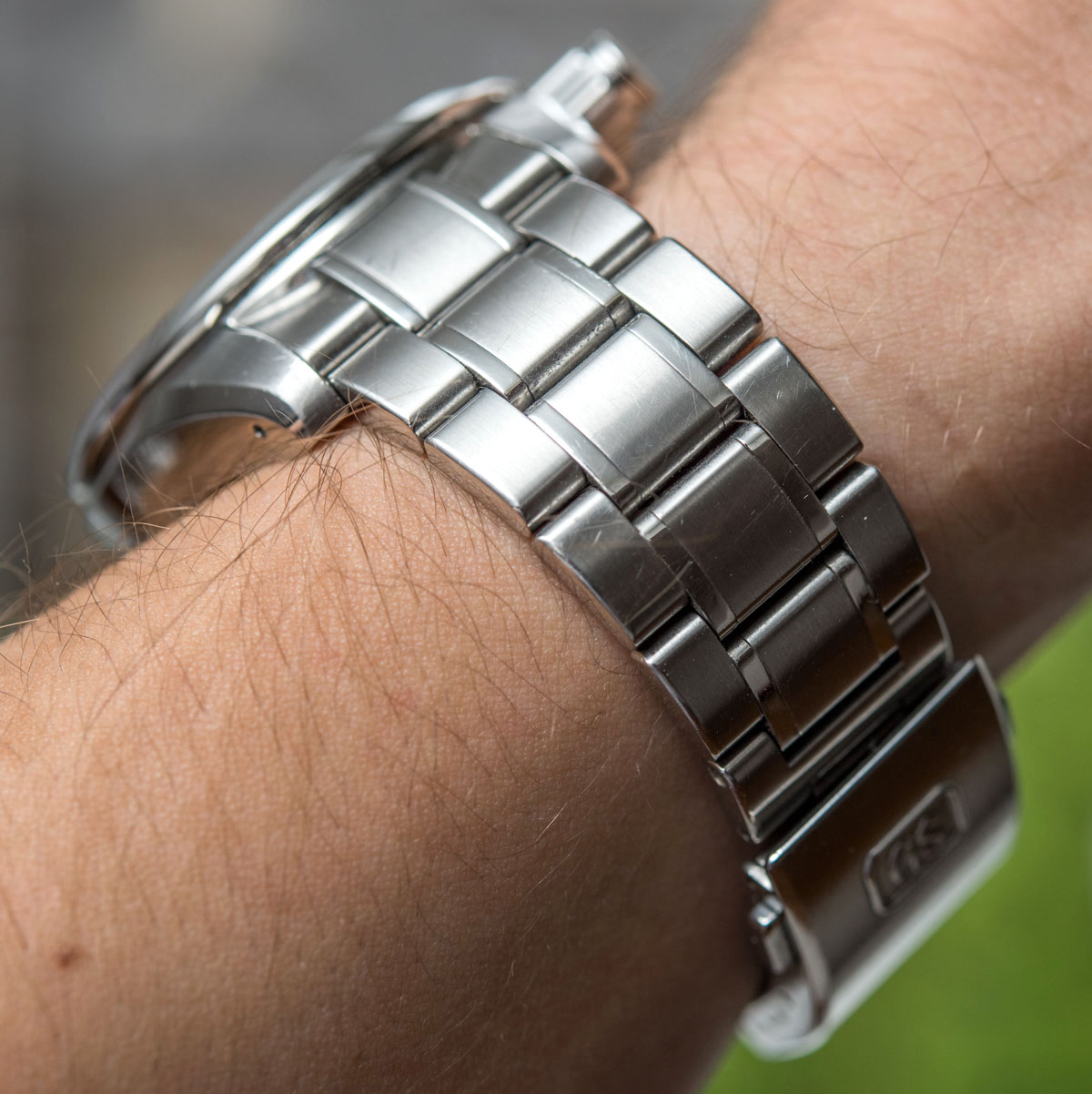
Zaratsu Polishing vs. Daily Wear
One of the joys to solid, high-quality stainless steel is that it can take a beating without shortly developing the visual traits of a dog’s dinner. On the Grand Seiko Spring Drive Chronograph SBGC001 the case and bracelet are some of the most beautifully finished I have ever seen on a watch at this price point (and quite above it as well). I wouldn’t think I’m particularly heavy-handed or hard on my watches, but I don’t babysit them either. I’ll either keep a watch in its box in pristine, unworn condition or wear it as I normally would – I personally don’t see the point to taking the watch out into the real world and then freaking out over the watch coming in contact with everyday objects.
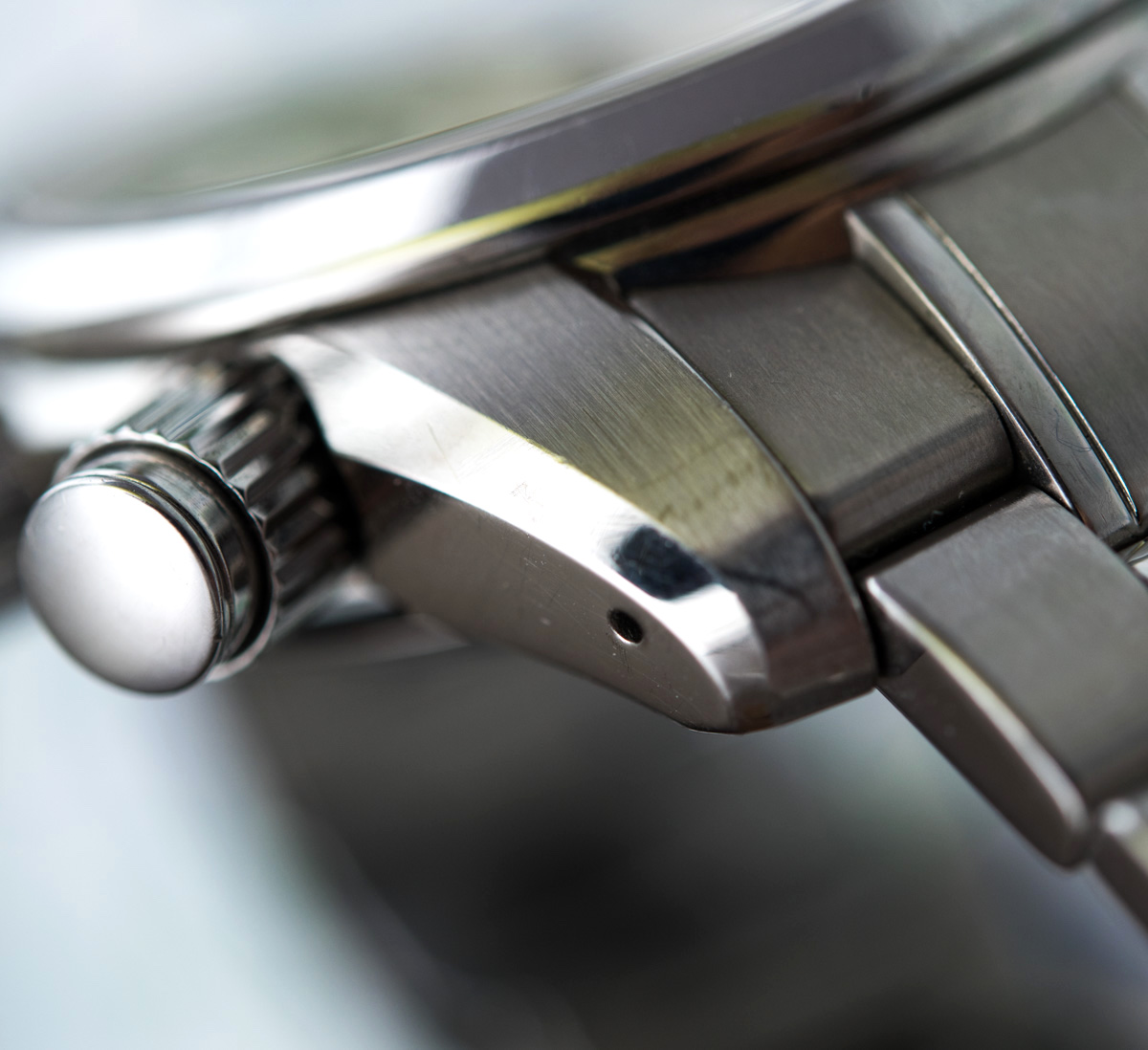
With this noted, my SBGC001 shows quite a lot of wear on the bracelet, case, and bezel. There are phases to how a watch wears: there’s the point when it’s all new and sublimely shiny and spectacular in every way. Then the first scratch appears, and then a few more. There comes a point, and this is the saddest part in my mind, when the watch still has the traits of a new watch but is scratched up. Things only get better from here, as the watch starts to develop what I guess we could call patina. As all normally visible surfaces show wear, the smaller or larger imperfections no longer stand out so much and the watch takes a new and more likable look – that of a timepiece that’s been worn, as all watches should be.
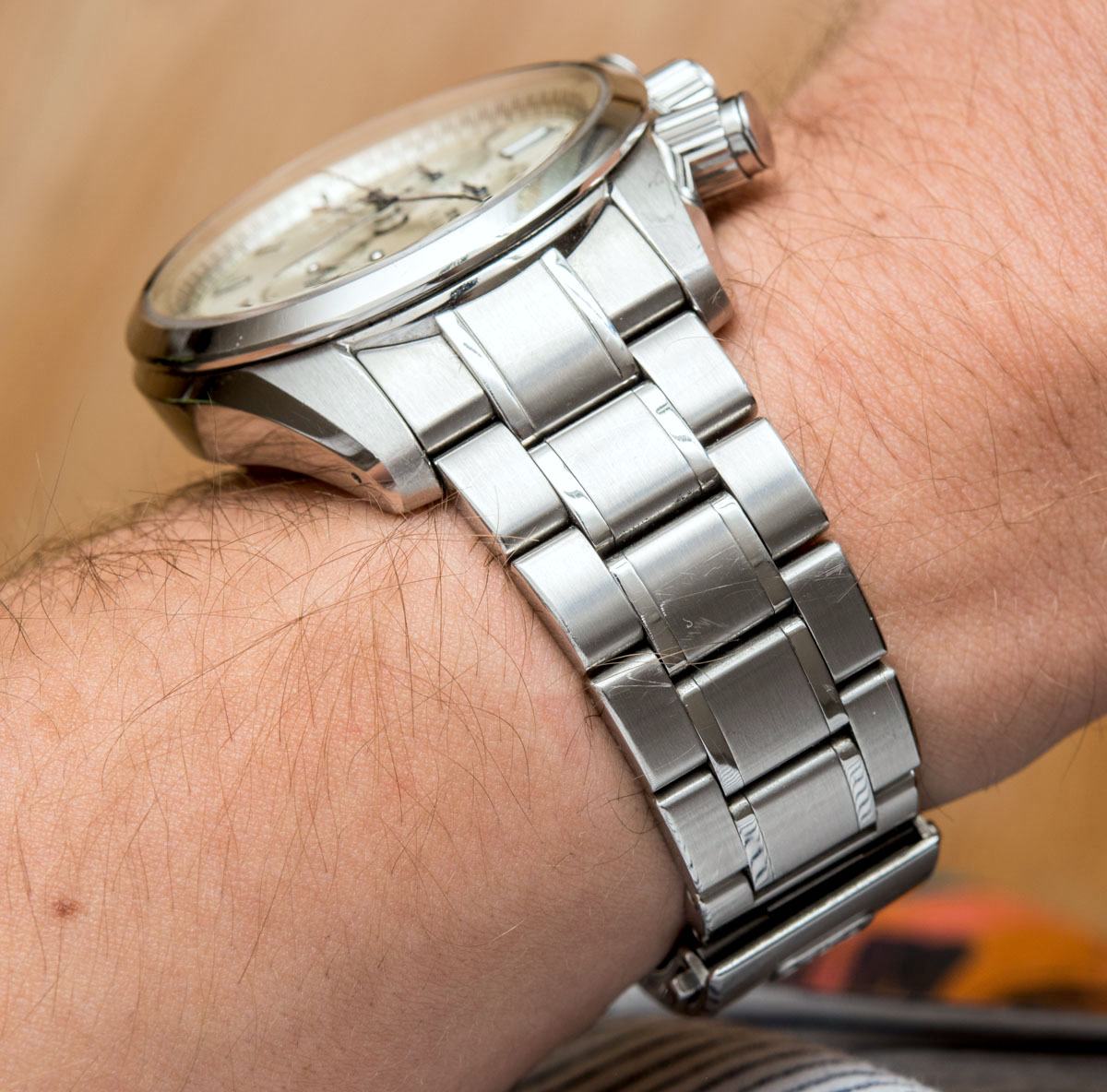
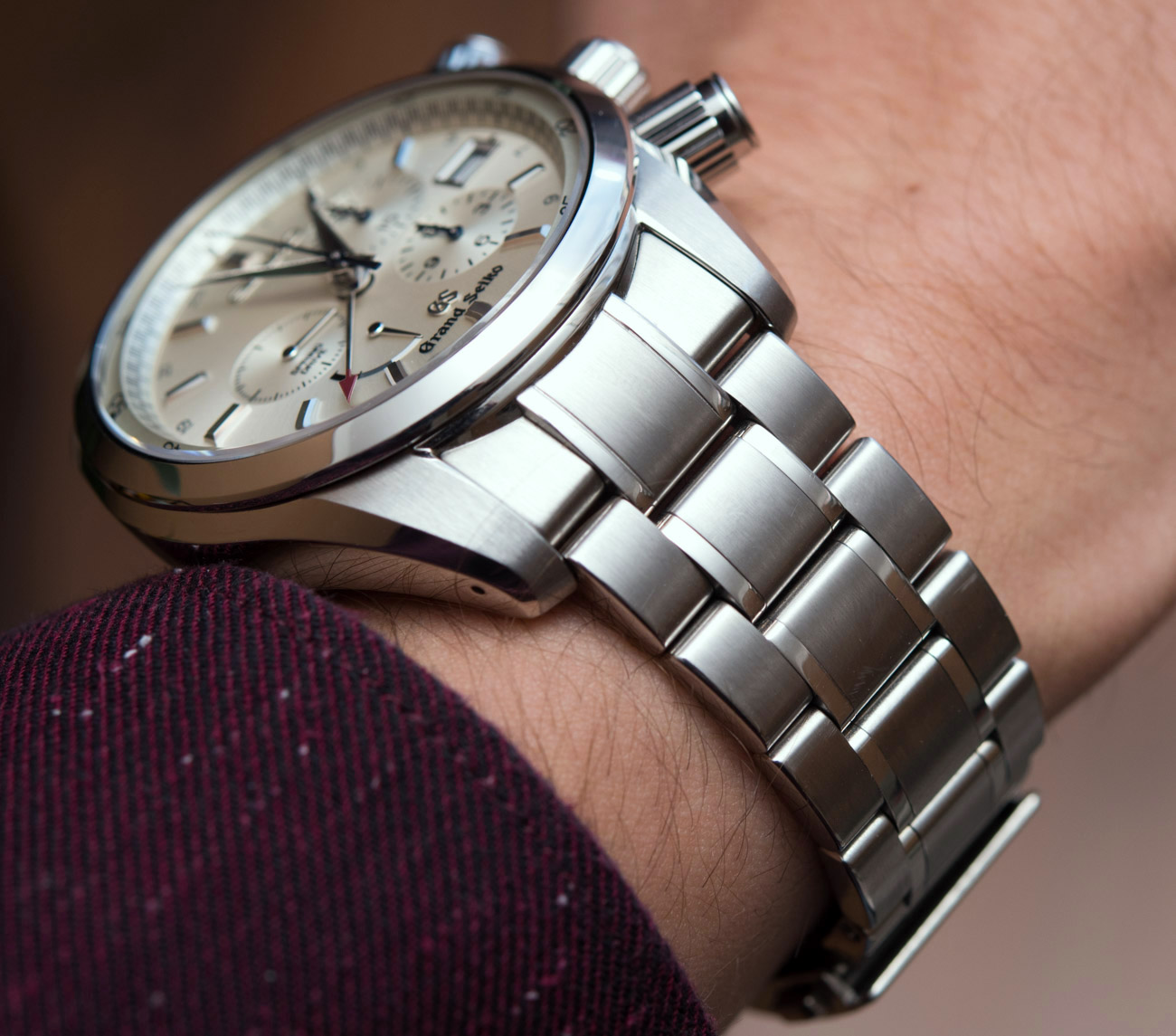
I am not a fan of refinishing because I value sharp edges much more highly than I do shiny or perfect surfaces. I also have absolutely no trust whatsoever in any Grand Seiko (or otherwise) service center and their ability to faithfully recreate the deep polish on the side of the lugs, for example. I’ve seen too much bad finishing and shiny but uneven surfaces not to appreciate the dense, deep, albeit worn look of the lugs on this watch – and I suggest that you yourself, if you really insist, give refinishing a try on a quality watch (because polishing crap won’t yield spectacular results worth judging) that you no longer wear or hold so dearly, just to see the difference between a refinished surface and an original one.
A really good idea on the other hand is washing your watch frequently. Just under running water from the tap is fine – though an ultra-sonic cleaning of the bracelet (or the case with the movement aptly removed) in a workshop will yield even better results. To this day I’m amazed by the difference in this watch between when it looks clean and when it actually is clean.
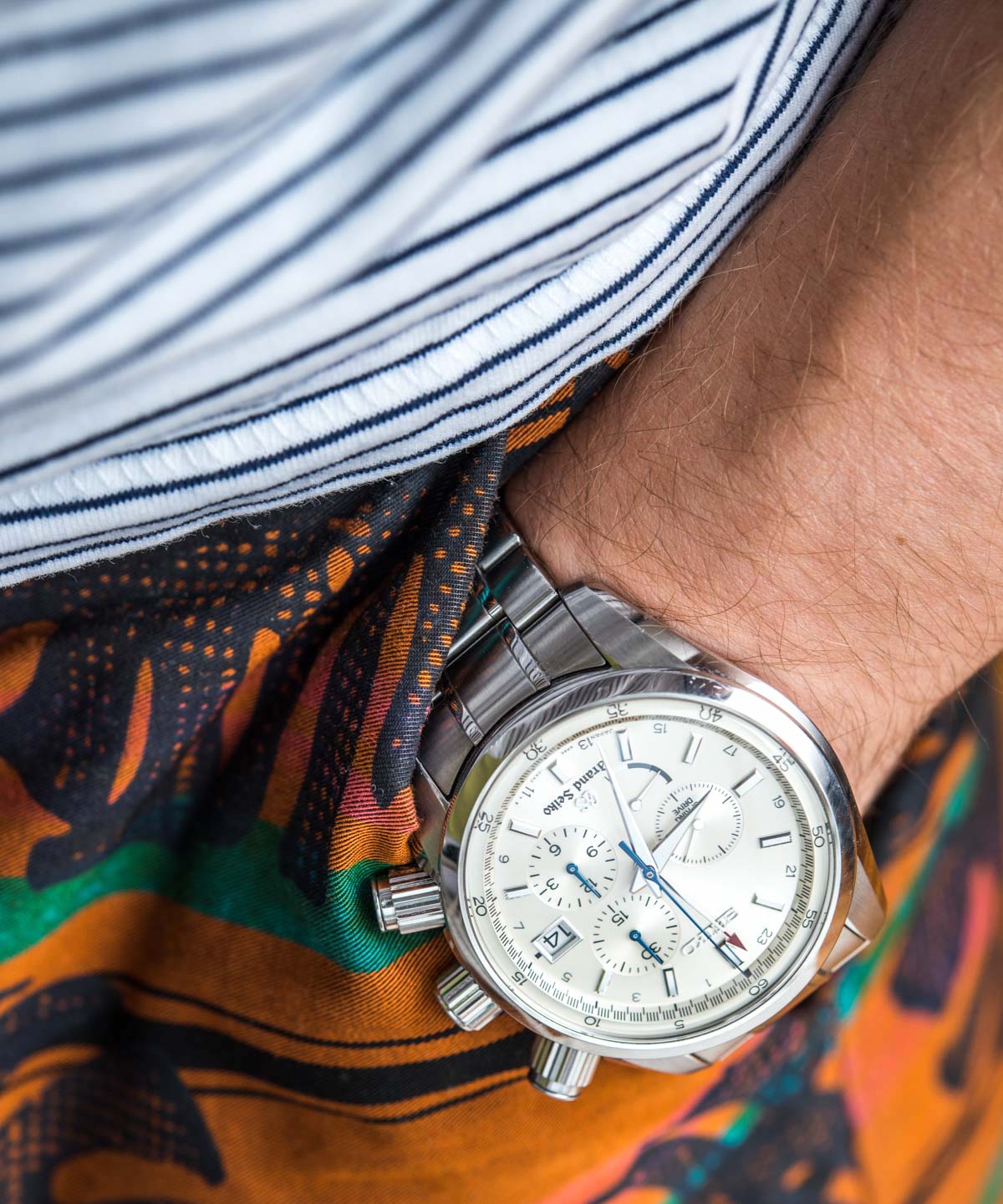
General Comments On Ownership
To this day the Grand Seiko Spring Drive Chronograph SBGC001 is the watch I reach for most often when picking a watch to wear for the day. The comfort, reliability, durability, looks, and attention to detail render it the most satisfying package – I know it to be superbly accurate, I know the details of the case and dial will continue to amaze me should I have a moment to glance at it, and the overall feel and comfort is sublime as well. I wouldn’t deny a titanium version considerable wear-time either, as I think the only way this watch could be improved is by adding lightness – and a friggin’ tool-free micro-adjust.

